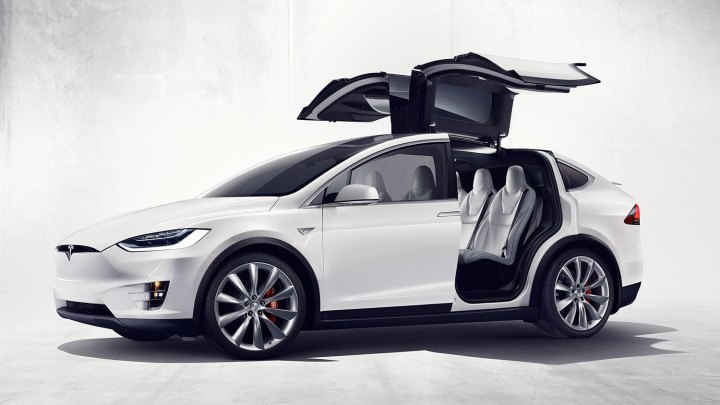
The new program runs through July 15. As with previous Tesla referral programs, owners will get a link that the buyers they refer can use when ordering cars online. These referral programs capitalize on Tesla owners’ enthusiasm for the brand, but also incentivize them to nudge friends and relatives into buying new electric cars. In addition to the $1,000 credit, owners can also get some Tesla swag if they refer enough people.
Two vehicle referrals gets an owner a “Moab Weekender Bag” that matches the interior of their car. Three referrals earn a jacket, and four win an invitation to the opening of Tesla’s battery “Gigafactory” in Nevada July 29, transportation included. For five referrals, owners get a set of 21-inch Arachnid wheels. Each referral also enters the referrer into a drawing for a brand new Model X P90D with Ludicrous mode.
Read more: Tesla gains one million millions of self-driving data every 10 hours
Previous referral-program prizes included a $1,200 credit toward a home charging station, an invite to the Model 3 reveal, and Model X and Model S cars. The programs have worked out pretty well for Tesla so far. In the last program, there were a number of enthusiastic Tesla owners who referred dozens of new customers to the company in order to claim the various prizes.
However, the referral programs have also generated some controversy. Last year, Virginia legislators declared that Tesla had run afoul of state laws prohibiting compensation to people selling cars that aren’t licensed as car dealers. Tesla decided to cut incentives for referring owners in the Old Dominion, and give them to referred customers only.
Tesla has also been challenged over its general sales model, because it sells cars directly to customers through retail stores or its website, rather than through franchised car dealerships. That’s the flip side of doing things differently, but it doesn’t seem to have slowed the company down that much. Tesla now believes it can sell 500,000 electric cars per year by 2018, rather than by 2020 as it originally predicted.


